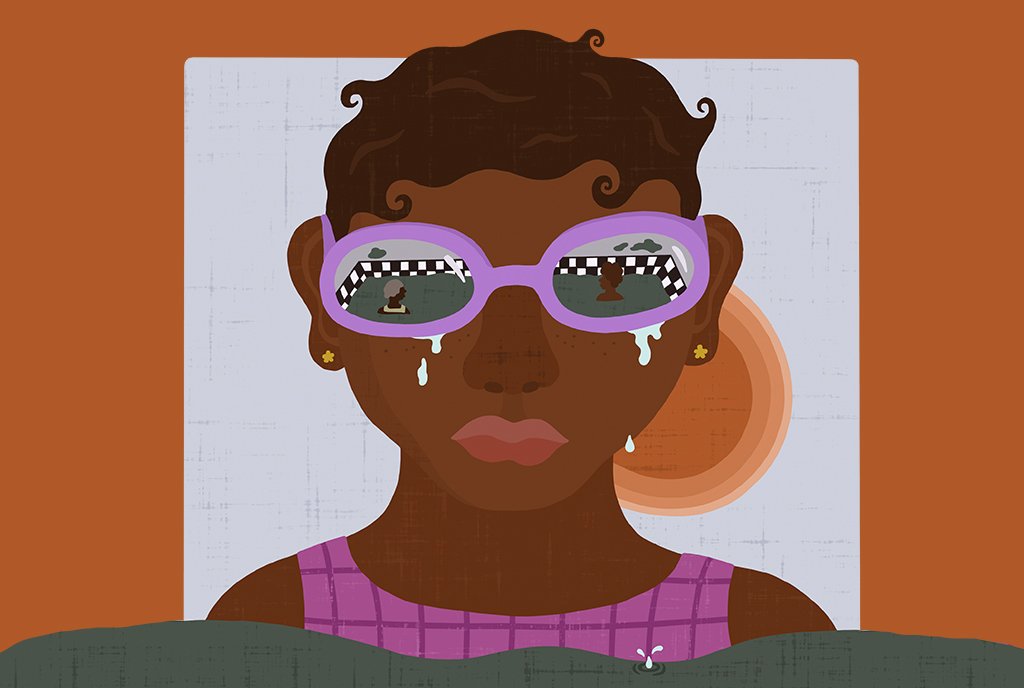
“I wish it was someone else that was here talking about my contact burn and not myself,” 71-year-old Robert Woolley, a retired teacher and Navy fighter pilot told a news channel in Arizona.
Woolley was recovering from second-degree burns he received in early July when he lost his balance and fell in his backyard. The ground was hot enough to burn Woolley on over 15 percent of his body. While Woolley’s accident may seem rare, Valleywise Health’s Arizona Burn Center, where Woolley received care, said it has treated more than three dozen victims of similar contact burns already this summer.
“Hurricanes are terrible. Earthquakes are terrible. But actually, heat is the number one killer now.”
The world will be seeing more and more injuries and deaths related to heat, thanks to climate change. Temperatures are rising and so are the accidents and illnesses associated with them: burns, heatstroke, heat syncope, rashes, and heat exhaustion. Wildfire smoke is another deadly consequence of our warming planet, which can lead to lung and heart issues, among other health complications, many of them severe. But neither extreme heat nor wildfire smoke are currently considered response-worthy disasters by the Federal Emergency Management Agency (FEMA).
The Number One Killer
In June, a coalition of environmental nonprofits, labor unions, health experts, and environmental justice groups filed a petition with FEMA, asking the agency to reconsider the exclusion of heat and wildfire smoke in its emergency response. A leader of the petition, Jean Su, director of the Energy Justice Program at the Center for Biological Diversity, told NPR, “Hurricanes are terrible. Earthquakes are terrible. But actually, heat is the number one killer now of the climate emergency of any weather-related event.”
As NPR reported, climate change has shifted heat and smoke from wildfires from “what was once a manageable seasonal problem” into a massive and deadly one that shows no sign of stopping. “No One Knows Exactly How Many People Are Dying from Extreme Heat,” read a July 2024 headline from Bloomberg.
But without question, the numbers are high.
According to the Centers for Disease Control and Prevention (CDC), at least 2,000 people died because of heat in 2023—a number that is believed by experts to be a vast underestimation. Heat kills in a way that can be mistaken for other illnesses. It’s hard to distinguish between heat exhaustion and the more serious heat stroke. It’s often difficult to know how extreme heat may have exacerbated existing issues, like a heart condition.
The same is true of smoke. As Scientific American wrote, “There are a number of ways wildfires can kill. One is direct injury and burns if you are caught in a fire.” But other ways are cumulative and more subtle: smoke can kill over time. Wildfire smoke is itself toxic, containing many chemicals and particles small enough to easily enter the bloodstream and travel deep into the lungs. That can lead to adverse health outcomes later on, worsening asthma, bronchitis, COPD, and increasing rates of cancer in the lungs, sinus, and nasal cavities.
In March of 2024, NPQ reported about the previous year’s estimated 12,000 people who died of climate-related events. That was a 30 percent increase from the year before. Those death rates are only expected to continue to rise—and dramatically. By 2050, “climate change may be responsible for an additional 14.5 million deaths,” according to a report from the World Economic Forum.
When a massive heat dome struck the Pacific Northwest and nearly a hundred people died, no federal support came.
As NPQ noted, “It’s unlikely that any paperwork will reflect the role global warming played in these deaths. Instead, ‘stroke’ or ‘chronic obstructive pulmonary disease’ will be listed. This discrepancy is an urgent issue for those working to improve the environment.”
Sign up for our free newsletters
Subscribe to NPQ's newsletters to have our top stories delivered directly to your inbox.
By signing up, you agree to our privacy policy and terms of use, and to receive messages from NPQ and our partners.
No Federal Support Came
Deaths from climate events like wildfire smoke and heat may be hard to quantify. But as NPQ wrote, “If climate change-related deaths aren’t adequately recorded, that lack of information trickles down, resulting in an underestimation of the impact of extreme weather.” Such miscalculation comes at a time when swift climate action has never been more urgent.
Failure to track climate change health issues also makes it more difficult for victims of these climate events to receive proper care. We can’t treat the problem unless we comprehend the severity of the problem. That’s a concern of the coalition filling the petition. “If we’re actually looking at where FEMA can actually make the biggest difference, it would be targeting and focusing major disaster funding on actual health impacts and lives of extreme heat and wildfire smoke,” Su told NPR.
Care for people affected by climate emergencies also heavily involves preventive measures: setting up cooling shelters before the heat wave and establishing evacuation routes in advance of the wildfire. In the wake of a disaster, the cleanup can last much longer than the climate event and become another kind of trauma as survivors struggle to find care, support, and resources.
That kind of work requires time and money, something often in short supply for the communities in disaster’s way. NPR cited the example of 2021’s Hurricane Ida, which killed hundreds in the southeastern United States and for which “FEMA distributed billions of dollars and months of post-disaster support to states and families.” That same year, when a massive heat dome struck the Pacific Northwest and nearly a hundred people died, no federal support came.
When Illinois asked for help during a 1995 Chicago heat wave, and…when California did in 2022 for heat-related wildfires, FEMA denied their requests.
The Limitations of the Stafford Act
Why have heat and wildfire smoke been missing from FEMA’s disaster response?
FEMA is guided by a law called the Stafford Act, which lists 16 environmental catastrophes—such as hurricanes, landslides, and tsunamis—as disasters to which the agency is authorized to respond. This authorization is somewhat flexible, however, as the definition of natural catastrophe was (eventually) expanded to include COVID-19.
The absence of wildfire smoke and heat as FEMA-worthy disasters is in part due to red tape. “A state governor or tribal leader has to request a disaster declaration from the US president before FEMA can get involved,” according to NPR, and “few governors have made that request for a heat emergency.” But when Illinois asked for help during a 1995 Chicago heat wave, and more recently, when California did in 2022 for heat-related wildfires, FEMA denied their requests “because states did not demonstrate that their local resources were fully overwhelmed—a threshold the agency uses to decide whether to intervene.”
Experts say there is nothing in the language of the Stafford Act to prevent FEMA from responding to heat and wildfire smoke as emergencies, per se. But both these climate events are nebulous to define. What classifies a heat wave as intense enough to be a disaster? Number of deaths? Number of days it stretches on?
When it comes to chronic risks, such as heat, that’s the responsibility of state and local governments, according to Craig Fugate. The former FEMA administrator told NPR that FEMA’s response would only come for “something that is so out of character that it requires an emergency declaration.” But in an age of wildfire seasons coming earlier and more frequently, and as Earth sets a global heat record for the thirteenth month in a row, what is out of character? What is extreme enough?
“Yes, this is getting worse,” Fugate said. “Yes, it is tied to the climate.”











